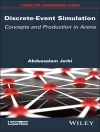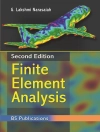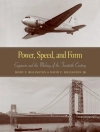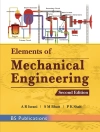This volume studies electron resonant tunneling in two- and three-dimensional quantum waveguides of variable cross-sections in the time-independent approach.
Mathematical models are suggested for the resonant tunneling and develop asymptotic and numerical approaches for investigating the models. Also, schemes are presented for several electronics devices based on the phenomenon of resonant tunneling.
Devices based on the phenomenon of electron resonant tunneling are widely used in electronics. Efforts are directed towards refining properties of resonance structures. There are prospects for building new nano size electronics elements based on quantum dot systems.
However, the role of resonance structure can also be given to a quantum wire of variable cross-section. Instead of an ‘electrode – quantum dot – electrode’ system, one can use a quantum wire with two narrows. A waveguide narrow is an effective potential barrier for longitudinal electron motion along a waveguide. The part of the waveguide between two narrows becomes a ‘resonator’ , where electron resonant tunneling can occur. This phenomenon consists in the fact that, for an electron with energy E, the probability T(E) to pass from one part of the waveguide to the other part through the resonator has a sharp peak at E = Eres, where Eres denotes a ‘resonant’ energy. Such quantum resonators can find applications as elements of nano electronics devices and provide some advantages in regard to operation properties and production technology.
The book is addressed to mathematicians, physicists, and engineers interested in waveguide theory and its applications in electronics.
Table des matières
Preface.- 1 Introduction.- 2 Waveguides. Radiation Principle. Scattering Matrices.- 2.1 Boundary Value Problem in a Cylinder.- 2.2 Problem in a Domain G with Cylindrical Ends.- 2.3 Waves and Scattering Matrices.- 3 Properties of Scattering Matrices in a Vicinity of Thresholds.- 3.1 Augmented Space of Waves.- 3.2 Continuous Spectrum Eigenfunctions. Scattering Matrices.- 3.3 Other Properties of the Scattering Matrices.- 4 Method for Computing Scattering Matrices.- 4.1 A Method for Computing Scattering Matrices outside Thresholds.- 4.2 A Method for Computing Scattering Matrices in Vicinity of Thresholds.- 5 Asymptotic and Numerical Studies of Resonant Tunneling in 2D-Waveguides for Electrons of Small Energy.- 5.1 Statement of the Problem.- 5.2 Limit Problems.- 5.3 Special Solutions to the First Kind Homogeneous Problems.- 5.4 Asymptotic Formulas.- 5.5 Justification of the Asymptotics.- 5.6 Comparison of Asymptotic and Numerical Results.- 5.7 The Impact of a Finite Waveguide Work Function on Resonant Tunneling.- 6 Asymptotics of Resonant Tunneling in 3D Waveguides for Electrons of Small Energy.- 6.1 Statement of the Problem and Outline of the Results.- 6.2 Limit Problems.- 6.3 Tunneling in a Waveguide with One Narrow.- 6.4 Tunneling in a Waveguide with Two Narrows.- 7 Resonant Tunneling in 2D Waveguides in Magnetic Field.- 7.1 Statement of the Problem.- 7.2 The Limit Problems.- 7.3 Special Solutions to Homogeneous First Kind Limit Problems.- 7.4 Asymptotic Formulas.- 7.5 Justification of the Asymptotics.- 7.6 Comparison of Asymptotic and Numerical Approaches.- 8 Effect of Magnetic Field on Resonant Tunneling in 3D Waveguides of Variable Cross-Section.- 8.1 Introduction.- 8.2 Statement of the Problem.- 8.3 Limit Problems.- 8.4 Special Solutions of Limit Problems.- 8.5 Asymptotic Formulas.- 8.6 Justification of the Asymptotics.- 9 Numerical Simulation of High Energy Electron Transport.- 9.1 Numerical Simulation of Multichannel Resonant Tunneling.- 9.2 Fano Resonances.-10 Asymptotic Analysis of Multichannel Resonant Tunneling.- 10.1 Statement of the Problem and Limit problems.- 10.2 Tunneling in a Waveguide with One Narrow.- 10.3 Tunneling in a Waveguide with Two Narrows.- 11 Electronics Devices Based on Resonant Tunneling.- 11.1 Magnetic Field Sensors Based on Quantum Waveguides.- 11.2 Transistors Based on Quantum Waveguides.- 11.3 Electron Flow Switch for Quantum Nets.- Bibliography.












